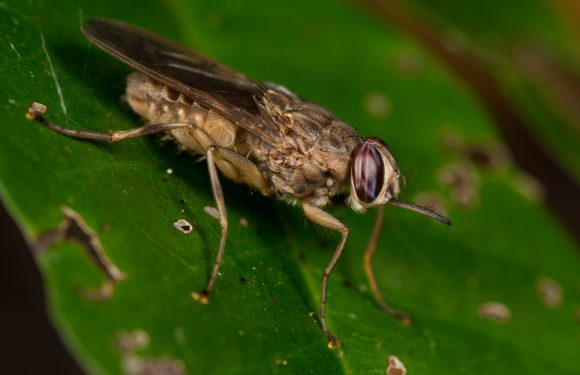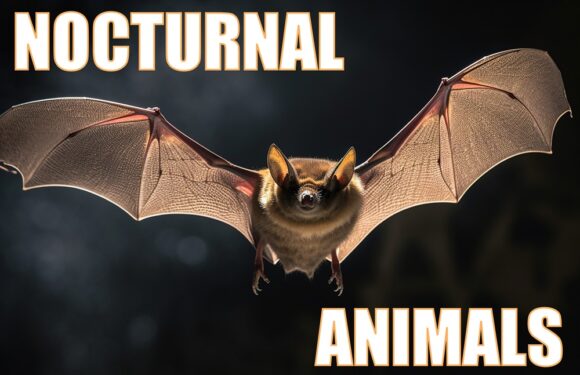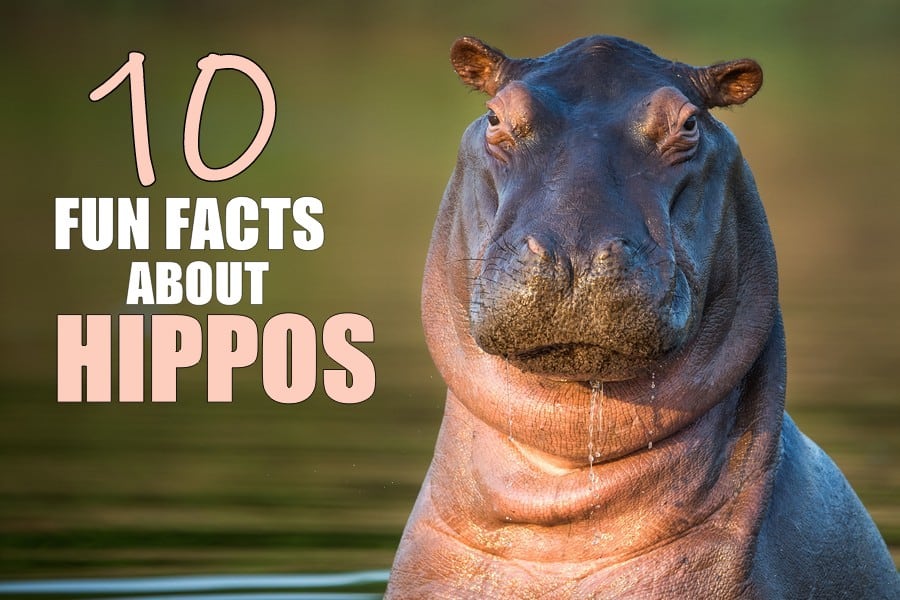
The hippopotamus is one of world’s most interesting animals. These semi-aquatic giants that inhabit the rivers and waterways of sub-Saharan Africa. They are primarily found in countries such as Tanzania, Kenya, Zambia, Zimbabwe, South Africa, and Uganda.
1. There Are Two Hippo Species
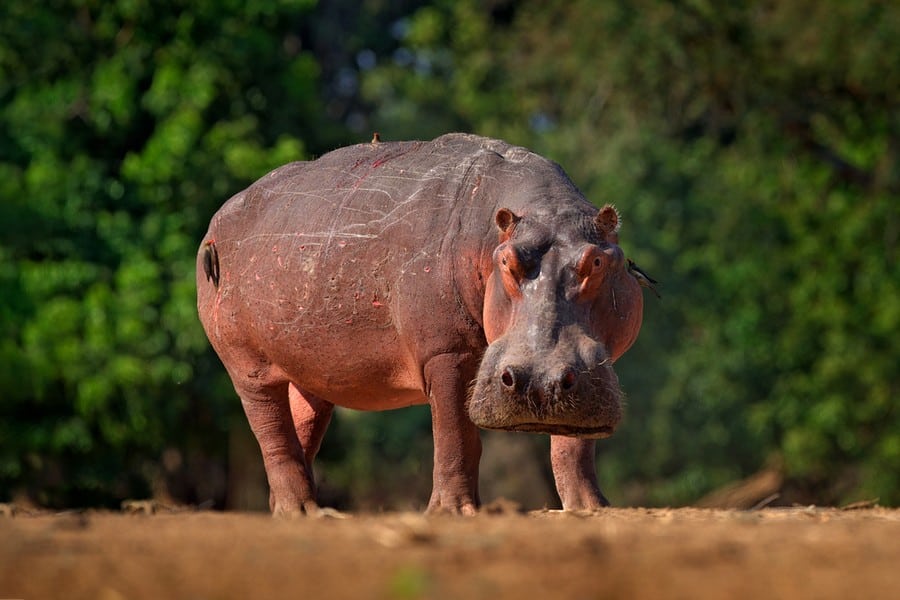
The common hippopotamus (Hippopotamus amphibius) is the species found in Tanzania. While once more widespread, these hippos are now primarily found in the country’s national parks, protected areas, and water systems.
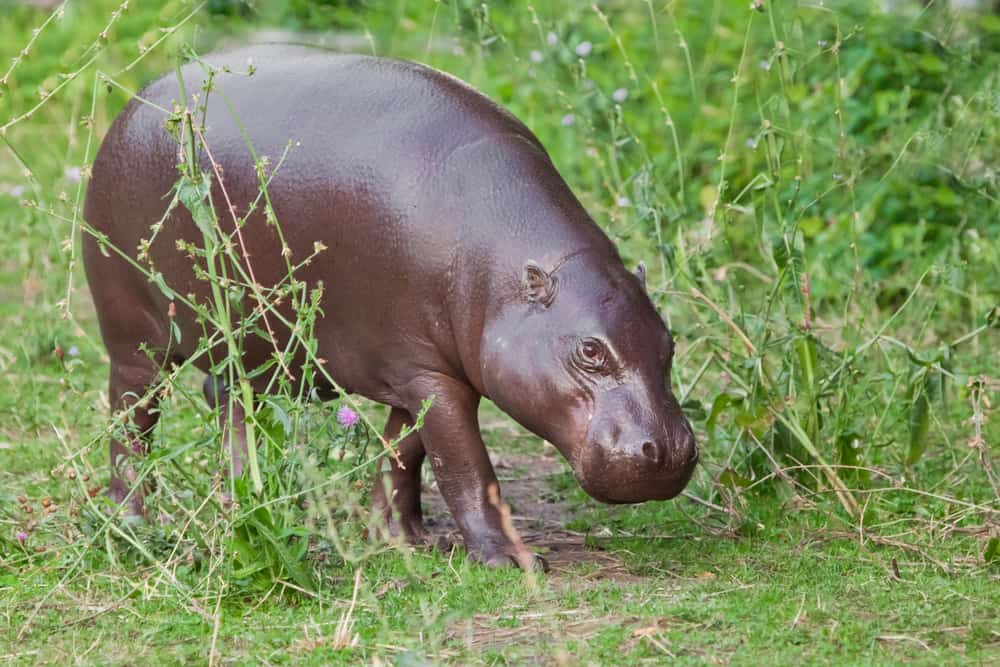
The pygmy hippopotamus (Choeropsis liberiensis or Hexaprotodon liberiensis), also known as the dwarf hippopotamus, is a smaller species found in West Africa. They are less aquatic than the common hippo and spend most of their time on land.
2. Their Name Means River Horse

The term “hippopotamus” finds its roots in ancient Greek.
Its name can be traced back to the combination of two Greek words. “Hippo” translates to “horse,” reflecting the appearance of the animal while “potamos” means “river,” due to the hippo’s aquatic habitats. Together, “hippopotamus” means “river horse,” which is a fitting name for this large, water-loving mammal.
3. Hippos Are Big-Bodied
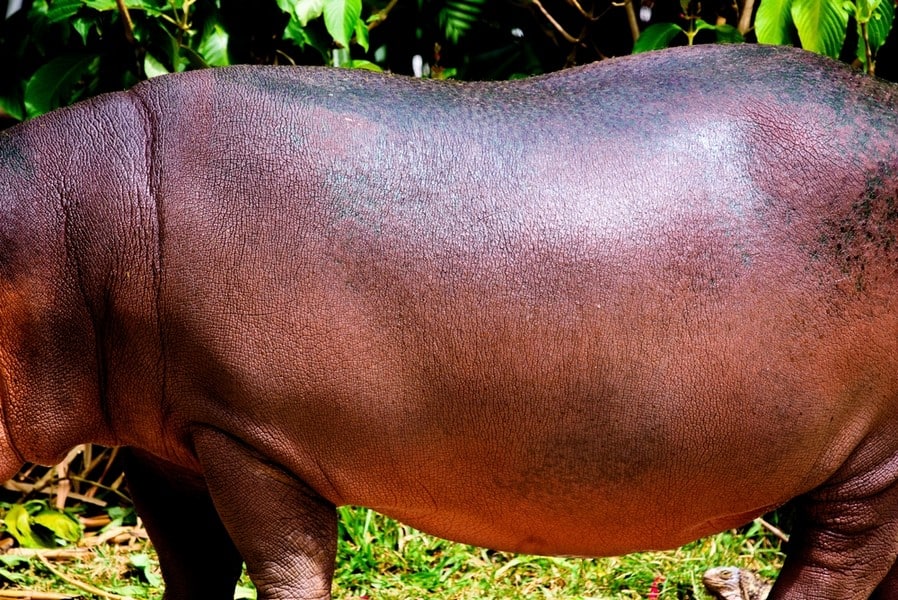
Hippopotamuses are among the largest land animals on Earth. They are smaller than elephants and white rhinos, but larger than polar bears, grizzly bears, bison, elk, and buffalo. Adult hippos can weigh between 3,000 and 4,000 pounds (1,360 to 1,814 kilograms) or even more.
They have stocky, barrel-shaped bodies, and a massive head. Hippos have relatively short, sturdy legs which are well-suited for supporting their weight.
3. They Have Large Canine Teeth

Hippos have a set of jaws that stand out in the animal kingdom. Their jaws can open at 150 degrees, paired with the strongest bite strength of all land animals. Furthermore, they have large canine teeth, often referred to as “incisors” or “tusks.” These teeth are elongated and can grow up to 50 centimeters (20 inches) in length.
The hippo’s teeth are used primarily for combat and territorial displays rather than feeding. The incisors continue to grow throughout a hippo’s life, ensuring they remain sharp and effective.
4. Hippopotamuses Munch on Grass
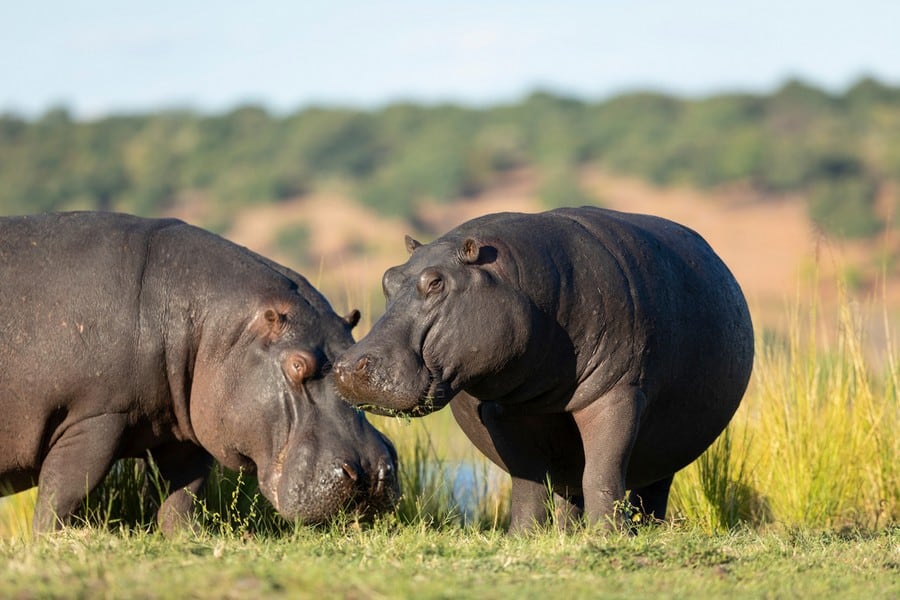
Although hippos possess imposing tusks, they are primarily herbivores. Their diet consists of grasses, aquatic plants, and other vegetation. Hippos often graze on land during the cooler nighttime hours and return to the water during the day to escape the sun. They are known for their impressive appetites and can consume large quantities of vegetation, up to 75 pounds (35 kilograms) of grass in just one night!
Unlike many herbivores, hippos lack prominent lips to protect their teeth while feeding. Instead, they have evolved a specialized way of cropping grass with their wide mouths.
5. Hippopotamuses Are Great Swimmers
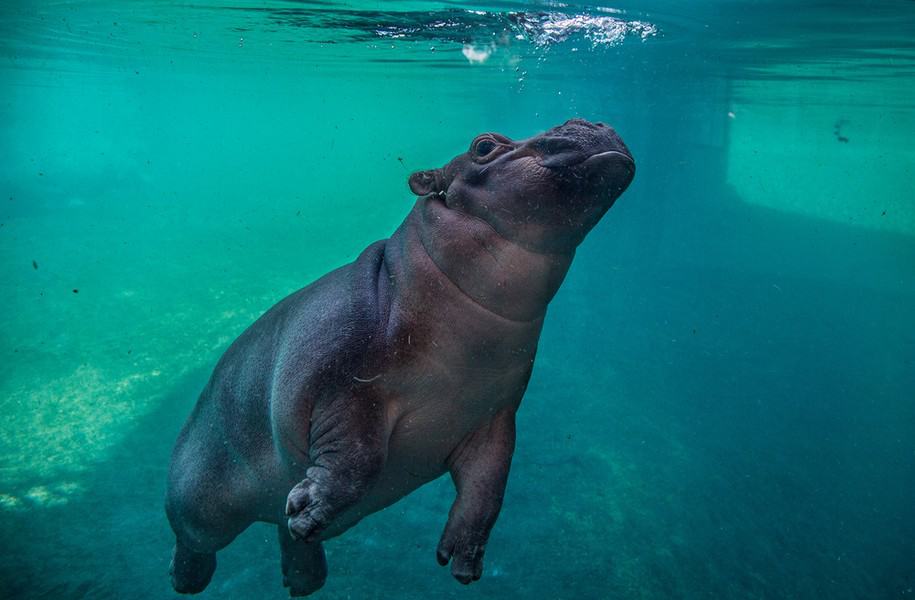
Hippopotamuses are scientifically known as Hippopotamus amphibius. Their name should clue you in on their impressive swimming capabilities. Despite their stocky build, hippos are agile swimmers. They can move quickly through the water, at speeds of up to 8 miles per hour (13 kilometers per hours), thanks to their webbed feet and streamlined bodies. Their legs, while short, are powerful enough to propel them through rivers and lakes.
Hippos can remain submerged for extended periods. They can hold their breath underwater for up to five minutes, making them skilled divers when needed.
6. They Make Their Own Sunscreen
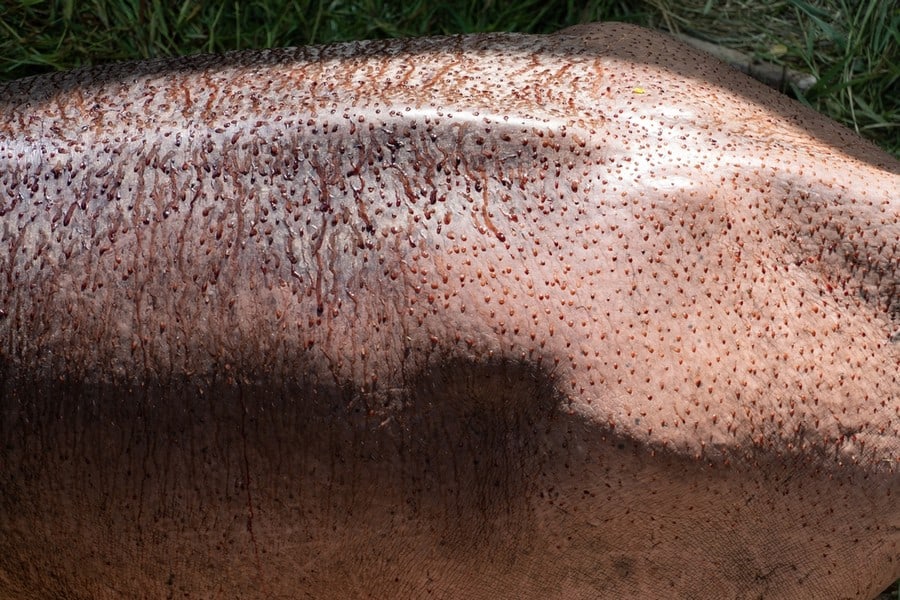
Hippos have a skin adaptation that gives them natural sun protection. Their pinkish hue is caused by a thick, oily, and viscous skin secretion known as “hippo sweat.” This substance acts as a barrier against the harmful effects of the sun. It scatters light and blocks ultraviolet (UV) radiation.
Beyond sun protection, this skin secretion also helps hippos retain moisture. It prevents excessive dryness and cracking of the skin while keeping them cool in the scorching African heat.
7. Hippos Are Very Dangerous

Hippos are highly territorial animals, particularly in aquatic environments. They vigorously defend their territories, especially when they perceive a threat to their personal space. Hippos are one of the most dangerous animals in Africa. They have been known to attack boats, canoes, and humans, and are responsible for about 500 human deaths per year.
Fortunately, on land, hippos are less territorial. But they can still run at speeds of up to 19 miles per hour (30 kilometers per hour) in short bursts. So it’s always best to keep your distance.
Adult hippos don’t have many natural predators. Given their aggression, size, and bite, it is rare for animals like lions, crocodiles or hyenas to prey on them.
8. They Spray Their Poop
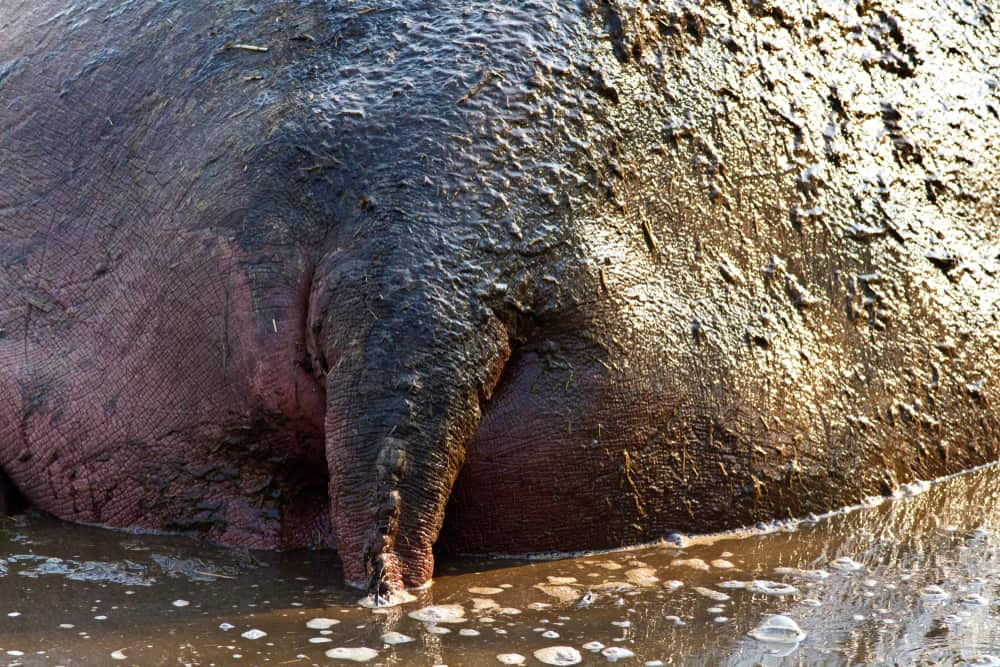
One of the most unusual behaviors of hippos is the spraying of feces with their short, muscular tails. This peculiar habit is done for the purpose of territorial marking. By vigorously flapping their tails while defecating, they disperse their feces and scent markings over a wide area. This communicates their presence to other hippos, both as a warning and as a way to assert dominance.
Interestingly, this behavior also plays a role in hygiene and temperature regulation. The dispersal of feces and urine through tail movements helps to keep the skin moist and cool (and smelly).
9. Hippos Herds Are Led By Dominant Females

Hippopotamuses herds can be referred to as pods or bloats. These herds can vary in size, ranging from a few individuals to over a hundred members. The composition of a herd typically includes adult females, subadults, and their offspring, along with dominant males.
The social hierarchy within a hippo herd is matrilineal, meaning it is based on the females’ relationships. Adult females form the core of the herd and establish dominance based on factors such as age and experience. These dominant females often lead and dictate the group’s movements and activities.
Despite their territorial nature, hippos within a herd engage in bonding behaviors. These can include grooming, touching, and communal activities like wallowing in water and grazing together.
10. There Are Wild Hippopotamus in Colombia
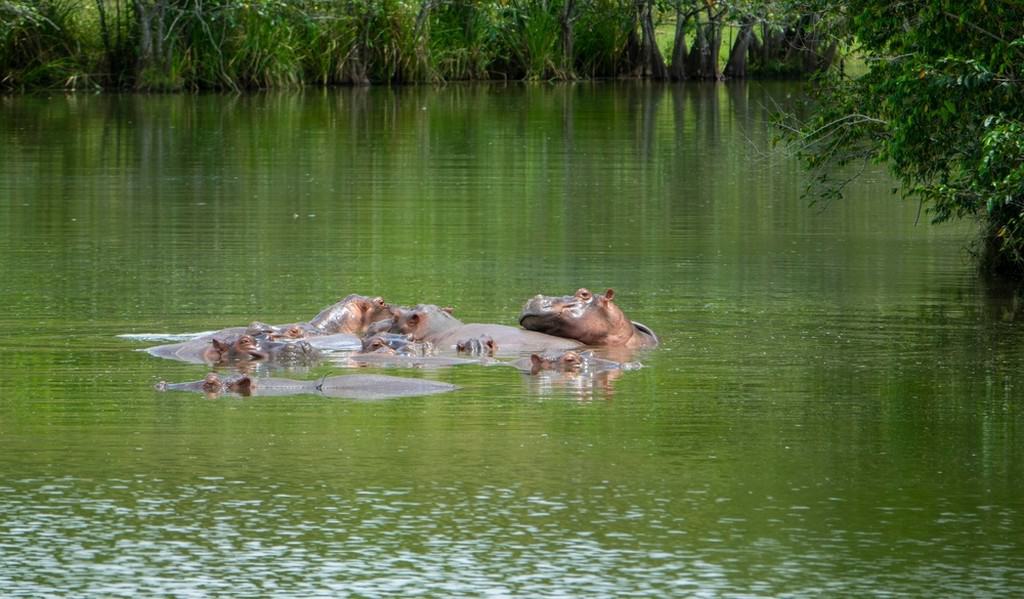
The infamous drug lord Pablo Escobar smuggled four hippos from Texas to his own wildlife park in Colombia in the 1980s. After his death, these hippos escaped to the nearby Madgalena River and have since multiplied to a population of between 90 to 180 animals. With no natural competition or predators, this invasive species is affecting the local ecosystem and landscape.
Colombia has begun a new campaign to sterilize its invasive hippos, showing signs that it is taking the threat the animals pose to the country’s biodiversity and local communities seriously.
Hippopotamus Quick Facts
- Scientific Name: Hippopotamus amphibius
- Common Name: Hippopotamus
- Size: Approximately 4.9–5.9 feet tall at the shoulder, 9.8–16.4 feet long
- Weight: 2,870–4,000 pounds
- Lifespan: 40–50 years
- Diet: Herbivore
- Habitat: Sub-Saharan Africa
- Conservation Status: Vulnerable
Want to see hippos in real life? Join us on a Tanzanian Safari.
In Tanzania, you can observe hippos in various national parks and wildlife reserves, including the Serengeti, Ngorongoro Crater, and Lake Manyara. They are found primarily in areas with freshwater habitats such as rivers, lakes, and wetlands.
























































